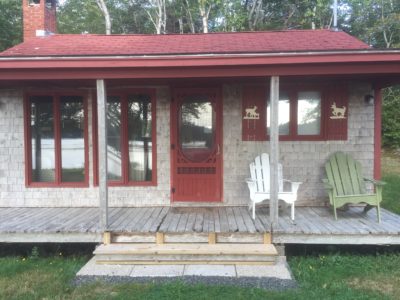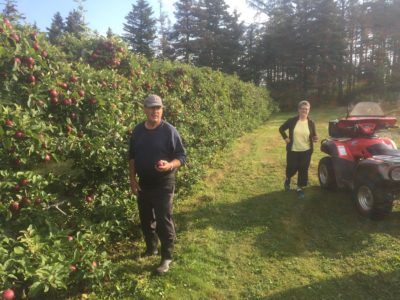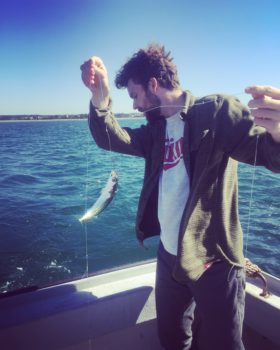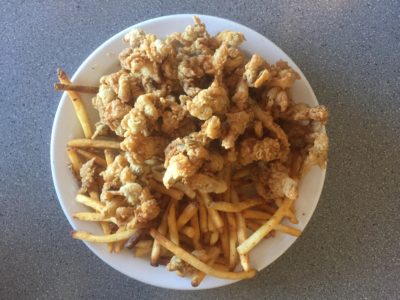Our process of filmmaking has changed a lot over the past 170+ films. We began with a very rustic and real approach to cooking and farming, it then evolved into vignettes about people and culture where we observed a character for a couple days and put together a piece that celebrated their life. While we still practice both those styles, we do get bored with them (the style not the stories) and so we try to make things fun and different – both for our audience and for ourselves. Our latest is an example of us trying something new and having a bit of fun.
While thinking of story ideas for Nova Scotia, we thought about an Acadian road trip with our friend Simon Thibault. Our initial brainstorming sessions rely heavily on what we are curious about, and we didn’t know anything about Acadia or its food… so it was perfect. Simon, however, doesn’t fit the mold for our usual stories: he’s not a farmer, he doesn’t grow oysters or have a bakery. He’s a journalist and a cookbook author. And our subject matter was Acadia, a place that is really defined more by people than by a location. Could this be a “sustainable” food story as our tagline proclaims? We think so. Sustainability isn’t just about organics, it’s about preserving culture, and about entertainment and creativity. So why not?
Along with this different theme, we also approached the film with a bit more intention than normal. Instead of just showing up and filming, we’d make a plan. We could travel through Acadia with Simon as our guide. After a brief interview in his Catholic memorabilia and taxidermy -laden apartment, we hit the road to Grand-Pre for a tour of the historic site commemorating the exile of the Acadian people. We wondered how we could present these places in a way that wasn’t boring. Hunter had the idea of having Simon walk in and out of each historic location — kind of Wes Anderson style.
We drove down the coast, stopping for the famous Rappie Pie at the Roadside Grill as well as a plate of fried clams, all the while setting up each shot of him entering and exiting a scene. The charm of the restaurant made the Rappie Pie go down a little easier, but I was still more inclined toward the clams.
From the diner, we stopped at a few churches and then went down to the docks and onto a friend’s boat. If you think you can’t catch fish, I’d recommend going out for mackerel. You drop a multi-hook line and within seconds we had caught dozens of the silvery fish. Seagulls dramatically followed the boat as we filleted, grasping for the bones and heads.
After filming Simon make some traditional Acadian dishes, we fried the mackerel in butter and ate them with tomatoes from the garden. We sat around the kitchen table with Simon’s generous and funny parents, snacking on their canned clams as dinner was prepared. Heaping the clams onto crackers with cream cheese was one of the best treats of our Nova Scotia trip — as was the company, and their little lakeside cabin we stayed in over night. As Simon would say, you can find Acadia in Grand Pre, Church Point in Belliveaus Cove – but you find it most of all in the home.
I guess in the end, we did make a film like our others…by capturing the spirit of a person and a place. In this case, we needed intentionality, whimsy, a wonderful tour guide, and some graphics (Mirra!) and imagination to bring it alive.








